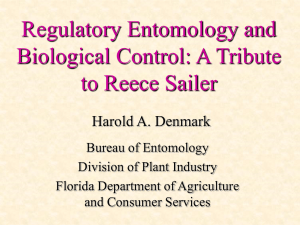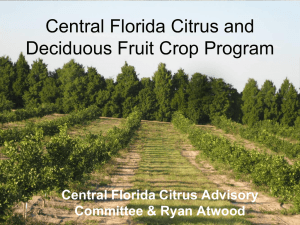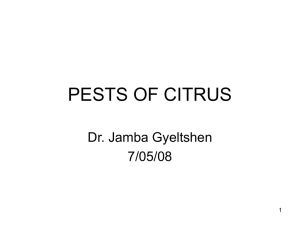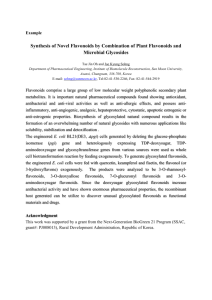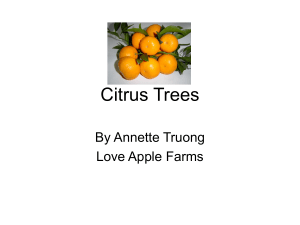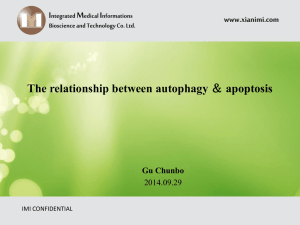Document
advertisement
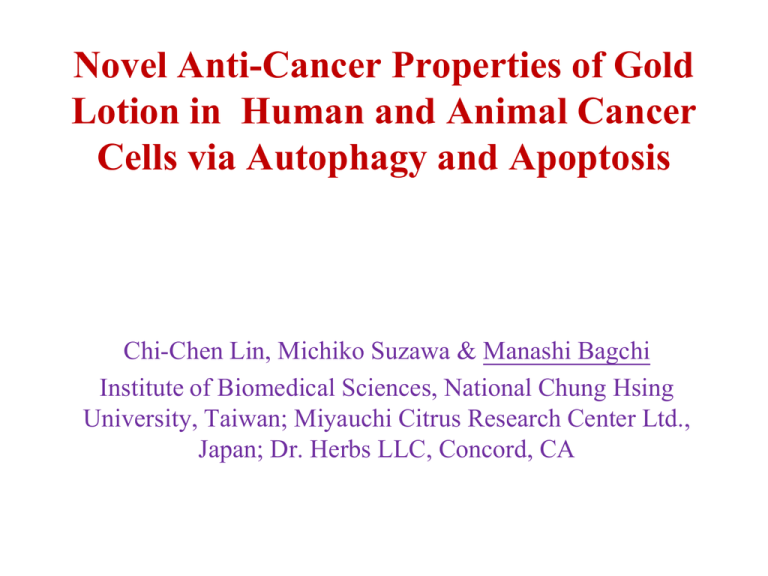
Novel Anti-Cancer Properties of Gold Lotion in Human and Animal Cancer Cells via Autophagy and Apoptosis Chi-Chen Lin, Michiko Suzawa & Manashi Bagchi Institute of Biomedical Sciences, National Chung Hsing University, Taiwan; Miyauchi Citrus Research Center Ltd., Japan; Dr. Herbs LLC, Concord, CA Formulated Extract From Multiple Citrus Peels Gold lotion (GL), a formulated product made from the peels of six citrus fruits (navel oranges, Citrus hassaku, Citrus limon, Citrus natsudaidai, Citrus miyauchi iyo and Satsuma), was initially marketed as cosmetics in Japan to protect skin from ultraviolet (UV) light irradiation Chemical Analysis of GL Abundant existence of Flavonoids:0.45 mg/ml & Polymethoxylated Flavonoids (PMFs): 0.1 mg/ml Toxicology & Safety Evaluation Broad spectrum safety studies were conducted by Huntington Research Center in UK demonstrated safety (Reports from Miyauchi Citrus Research Center) Acute Oral Toxicity Study: > 5,000 mg/kg body weight in male and female Sprague Dawley rats Primary Eye Irritation Study: No irritation was observed in New Zealand white Albino rabbits Delayed Hypersensitivity in Albino Guinea Pigs: No evidence of hypersensitivity was observed Phototoxic Potential: No phototoxicity of GL was observed in animals when exposed to UV lights over a span of 4 hrs following treatment with GL Anti-Cancer Effects of GL No carcinogenicity was observed in mice when they were treated for 30 days with 15 cc of GL No carcinogenicity was observed in dogs when they were fed 20 cc of GL over a period of 90 days Consumer reports indicate that topical and oral treatment of GL demonstrated anti-cancer properties for melanoma, prostate, lung and liver cancers. Miyauchi, 2013, US Patent No. 8,425,952 Anti-Cancer Effect of GL • Oral administration of GL protects mice against azoxymethane-induced aberrant crypt foci (ACF) in colonic tissues of mice by decreasing expression of genes associated with inflammation, such as iNOS and COX-2 in colonic tissues of mice. Effective suppression of azoxymethane-induced aberrant crypt foci formation in mice with citrus peel flavonoids. Mol Nutr Food Res. 2013, Mar;57(3):551-5 • Topical application of GL prevents 7,12-dimethybenez[a]- anthracene (DMBA)/TPA-induced skin inflammation and tumor formation. Inhibition of citrus flavonoids on 12-O-tetradecanoylphorbol 13-acetateinduced skin inflammation and tumorigenesis in mice. Food Science and Human Wellness, 2012; 1(1):65-73. • Lai et al. also demonstrated that potent anti-cancer effects of GL in human prostate xenograft tumors in nude mice Potent anti-cancer effects of citrus peel flavonoids in human prostate xenograft tumors. Food Funct. 2013 Jun;4(6):944-9. Materials & Methods Cell viability was performed using MTT assay Flow cytometry analysis: Cells were stained with acridine orange and analyzed on a FACS Calibur Flow Cytometer and the % of cells in each phase of cell cycle was analyzed with Win MDI software V/PI Staining: Biovision V-FITC apoptosis kit was used for apoptosis assay. The cells were evaluated immediately by flow cytometry after staining. Characterization of Autophagy: Biochemical marker of autophagy is LC3, which was monitored here by GFP-LC3 puncta and LC3 lipidation on Western blot. Accumulation of GFP-LC3 was also visualized by using fluorescence microscope as bright fluorescent puncta. Present Investigation Previous studies demonstrated the anticancer activites of GL in vivo, however, the underlying molecular mechanisms of the antitumor activity of GL is still not understood. Also, there is no report on the antitumor effects of GL against human lung cancer cells. Hence, the anti-cancer efficacy of GL was evaluated on human NSCLC and other cancer cell lines. The possible molecular mechanisms responsible for its anticancer activity were also investigated. GL Reduced Cell Viability in Human Lung Cancer cells PC-9 120 24 h 48 h 72 h 80 *** 60 *** 40 *** *** *** *** *** *** 80 *** 60 *** *** 40 *** 20 20 0 0 0 5 10 15 20 25 0 5 10 GL (%) 60 *** *** *** 40 *** *** 80 *** *** 0 15 GL (%) 20 25 *** 40 0 10 *** *** 20 5 *** 60 20 0 25 24 h 48 h 72 h 100 Cell Viability (%) *** 20 CL1-5 120 24 h 48 h 72 h 100 80 15 GL (%) A549 120 Cell Viability (%) 24 h 48 h 72 h 100 Cell Viability (%) 100 Cell Viability (%) H322M 120 0 5 10 15 GL (%) 20 25 GL Induced G2/M arrest and Sub-G1 in A549 Lung Cancer Control GL 20 % 24 hr 24 hr Percent of cells 80 ** 60 Control GL 20% 40 20 ns * ** G 2/ M S 1 G Su bG 1 0 48 hr 48 hr Percent of cells 80 ** 60 ** * 40 20 Control GL 20% ** 2/ M G S 1 G Su bG 1 0 72 hr ** Control GL 20% 60 ** ** 40 20 ** 2/ M G S G 1 0 Su bG 1 72 hr Percent of cells 80 GL Induced G2/M arrest and Sub-G1 in CL1-5 Lung Cancer Control GL 20 % 24 hr *** Percent of cells 60 24 hr * 40 20 ns *** Control GL 20% G 2/ M S G Su bG 1 1 0 48 hr *** 48 hr Percent of cells 60 Control GL 20% 40 20 *** * * 2/ M G S G Su bG 1 1 0 72 hr *** 60 40 *** Control GL 20% * * 20 2/ M G S 1 G 1 0 Su bG 72 hr Percent of cells 80 GL Induced Apoptosis in CL1-5 Lung Cancer 24 hr GL 20 % 40 Annexin V+ % Control CL1-5 ** 30 ** 20 ** 10 48 hr 72 hr hr 72 hr 48 24 hr 0 Control 20% GL GL Induced Late-Autophagy in CL1-5 Lung Cancer 24 hr 0% 2.0% 5.4% 40 ** 20 0 48 hr 0.% 0.1% Control 20% GL ** 60 24 AVO + 0.0% 80 0.0% hr 0.0% 72 0% CL1-5 Annexin V+ % 0.0% GL 20 % hr Control 48 hr 0.0% 24 hr 10.6% 0 0.1% LC3 0.0% 44.2% 14.4% 72 hr b-actin 0.0% 0.6% 20 % 72 hr 48 hr 0 20 % 0 20 (Gold lotion) % GL Induced LC-3 Puncta in CL1-5 Lung Cancer Control GL 20 % 24 hr GL 20% 48 hr 72 hr GL inhibited CL1-5-luciferase Tumor Growth in vivo Day 28 CL1-5-luc xenograft days Daymice-42 48 Control GL 200 ul Control GL 200 ul Control Control GL Averag e (x103) 24.0 ± 15.5 5.2 ± 2.0 Max 45.3 ± 22.6 10.4 ± 1.6 GL GL inhibits growth of CL1-5-lucifease in nude mice. Representative tumors from the control and GL-treated groups (day 28, 48). Mean of tumor volume measured at the day 48 after implant. GL induced Apoptosis and Autophagy in CL1-5 xenograft Control ki67 Caspase-3 LC3b GL 200 ul Major Flavonoids in 20% GL Concentration GL 20 % 1. Nobiletin 10.16 mg/ml 2. Sinesetin 4.26 mg/ml 3. (3,5,6,7,8,3′,4′-Hepta-methoxyflavone 3.84 mg/ml 4. Tangeretin 2.12 mg/ml 5. 3,5,6,7,3′,4′-Hexamethoxy-flavone 0.62 mg/ml 6. (5,6,7,4′-Tetramethoxy-flavone 0.22 mg/ml 7. Naringin 50.72 mg/ml 8. Hesperidin 20.94 mg/ml Summary & Conclusions • Present studies in conjunction with earlier studies demonstrated that GL, enriched in flavonoids having a high percentage of polymethoxy flavones, has broad spectrum safety as well as anti-cancer, anti-angiogenic and tumor shrinking properties by inducing apoptosis and cell death in various cell culture system. • The therapeutic mechanism of GL may be due to its anti-inflammatory and anti-proliferative efficacy towards cancer cells and induction of apoptosis. Acknowledgements • Yutaka Miyauchi • Michiko Suzawa • (Miyauchi Citrus Citrus Research Center,Ltd. (Japan) • Shimming Li, PhD • College of Life Sciences, Huanggang Normal University, Hubei, China) • Chi Tang Ho, PhD • (Department of Food Science, Rutgers University, USA) • Min Hsiung Pan, PhD • (Department of Food Science, National Taiwan University, Taiwan)
